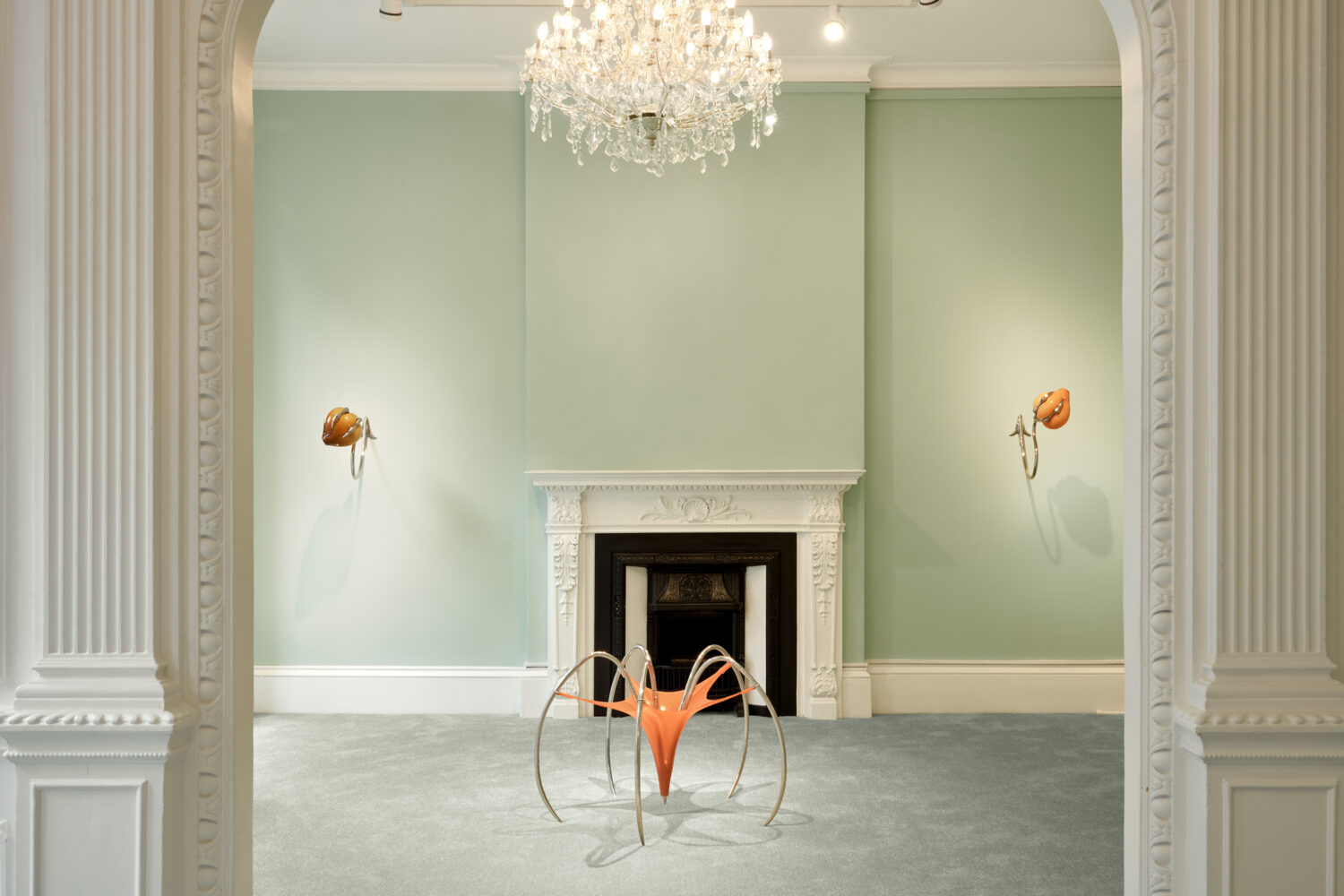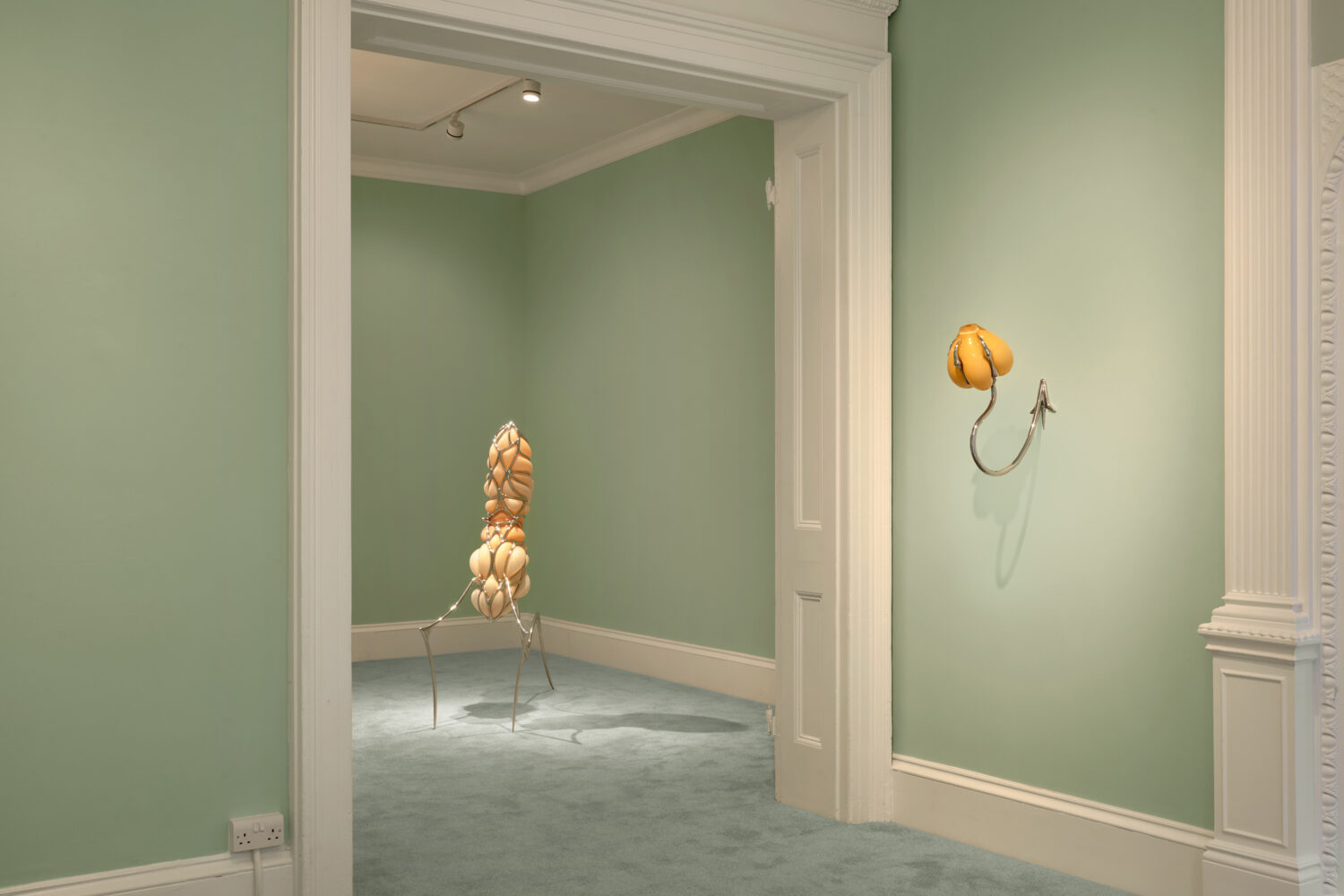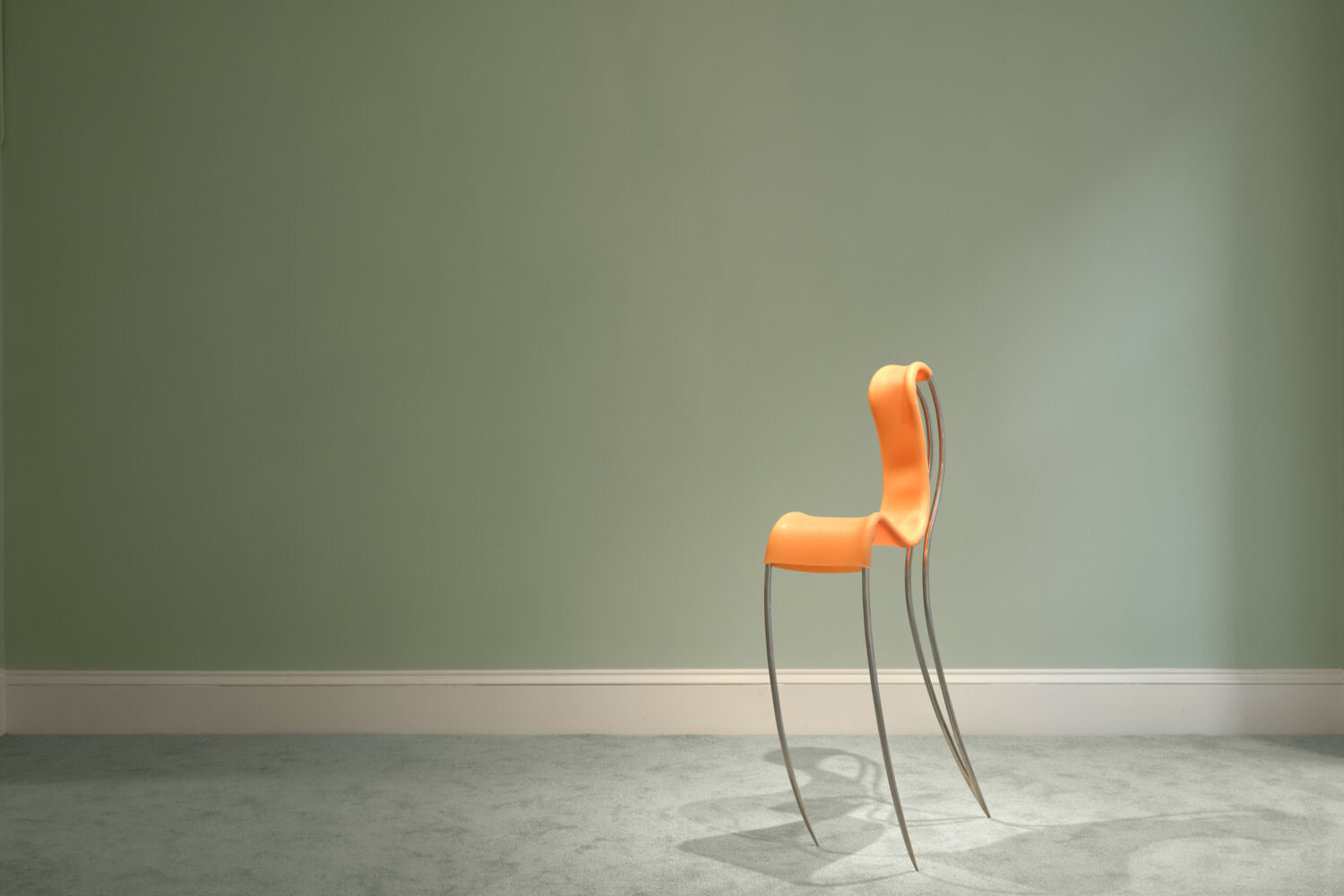5 Questions With Hannah Levy
By Keshav AnandNew York-based artist Hannah Levy’s metal, glass, and silicone sculptures are evocative of commonplace items, from domestic fixtures and furniture, to garments and medical equipment, even appearing at times akin to human flesh or food. Her lustrous works reveal an underlying unease as functionality is stripped away from form. Reimagining the familiar as uncanny, Levy creates objects that inhabit a transient space she refers to as “design purgatory.”
Continuing to explore this line of enquiry, open now and running until 22 June 2024 at MASSIMODECARLO, the artist presents Bulge, her debut solo exhibition with the gallery and in London. To learn more about Levy’s practice and the new show, Something Curated’s Keshav Anand spoke with the artist.

Keshav Anand: How has the historical architecture of MASSIMODECARLO influenced the pieces you created for Bulge?
Hannah Levy: I always think a lot about the space I’ll be showing in when preparing a new body of work. When I get the opportunity to show in a space that’s far from a white cube, like the historical MASSIMODECARLO London space with its domestic scale, ornate moulding, chandeliers, fireplace, mirrors, and wall colour, it presents a new set of opportunities for sculptural play. The pieces in this show are all very domestic in scale. I want them to feel like a kind of surreal furniture. There are several bends, curves, and details in the sculptures that are meant to reference certain details in the space.
One of the first decisions I made in coming up with the work for the show was the idea to cover the wood floor in green carpet that matched the gallery’s unique wall colour. The thinking was that the size and nature of the pieces along with the addition of the colour-matched carpet transform the gallery into a kind of surreal domestic jewellery box that allow the sculptures to exist as polished metal furniture-like creatures in a strange, ornate, domestic world of their own.

KA: I’m curious to learn more about the idea of “design purgatory,” a term you’ve used when talking about your work.
HL: I like the idea of creating objects that exist in a between space, meaning they are kind of a jumble of references and design languages. I hope they exist as objects that are familiar but still slightly unplaceable – they might reference furniture, handrails, or medical aids. They are also often a kind of blend of various design languages. A lot of the pieces in this show have Art Nouveau elements – there isn’t really a straight line in any sculptures – and they borrow a lot of details from the natural world whether that’s chrysalises, bird claws, or insect legs. But there’s a clear reference to modernist furniture as well in the round polished tubular stainless steel I use and the paired down simplified lines of the more furniture-like pieces.
KA: How do you see your sculptures in dialogue with other artists who explore zoomorphic forms, in particular, Louise Bourgeois?
HL: I love Louise Bourgeois, naturally. I know that any sculpture that is metal and somewhat spider-like in appearance will end up referencing her. I hope that my sculptures exist as a kind of collage of references, whether that’s the work of more historical artists, a chair, medical equipment, or moments directly adopted from the natural world. I love a reference – the more the merrier.

KA: Can we talk about the significance of the flaccid silicone asparagus in your exhibition?
HL: The asparagus is a form I’ve been playing with for a long time, actually since college. I like the shape to begin with, and that when translated into silicone, it becomes this strange flaccid appendage. When I’ve played with the scale of the asparagus, I like to keep it at sizes that feel bodily. The asparagus that’s part of Bulge in the South Audley window is very human in scale and is held in kind of a reclined position.
I also like playing with art historical references – the reclining nude, the still life asparagus. But mostly, I like the asparagus as an object transformed in fleshy silicone specifically because there’s something so strange and almost invasive about the asparagus as a vegetable. The fact that they have a kind of lingering effect on the body – that they make your pee smell weird.
KA: And what are you currently reading?
HL: On Immunity by Eula Biss.
Feature image: Installation view of Hannah Levy’s Bulge at MASSIMODECARLO, London. Photo: Robert Glowacki. Courtesy MASSIMODECARLO